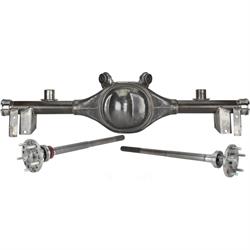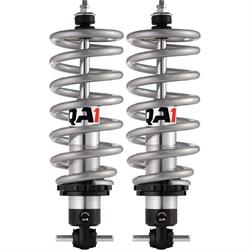Project Chevelle: Performance Testing Article
We’ve been on a pretty epic journey with our Project Chevelle over the past year. We started with a cherry, one-owner ’72 Chevelle, then upgraded the suspension, brakes, transmission and engine (twice) with parts out of the Speedway Motors catalog.
If you’ve been following along, you may remember the video where we terribly mistreated the otherwise very stock Chevelle and called it “performance testing.” The car was such a creampuff that we actually felt a little bad about beating on it, but it was important for us to know what we were starting with. With a baseline established, we could repeat the tests to see if we were really making the car perform better. Well, the time has come to see if all our changes have really made the upgraded car as quick as it feels.
There was no need to repeat the chassis dyno test. The car’s current LS powerplant made almost 500 horsepower at the crank on our engine dyno. Instead, we focused on our little autocross course. We measured out the exact same course that we used last time, set up some cones and drug out the same timing equipment to verify the accuracy of our results.
The very best lap time from the stock Chevelle test months ago was 18.2 seconds. On Pat’s first warm-up lap in the upgraded car, he turned in a 17.7 second pass. That improvement right out of the gate was promising. On a tiny course like this, a half-second is a dramatic difference. Often at a national autocross event, only a half-second separates first place from fifth. As Pat warmed up, his lap times improved, and he ended the day with a very impressive 16.4. Josh’s times also improved, starting at 17.39, he ended with the fastest pass of the day; a blistering 15.6. That’s almost three full seconds faster than the best run in stock trim. If a half-second is a long time in the autocross world, three seconds is an eternity. That’s a dramatic improvement, to say the least.
We know what you’re thinking. “Of course it’s faster, the horsepower has quadrupled since last time.” And you would be right, but there’s more to the story. We’ve learned a few things about autocross while campaigning our fleet of G-Comp equipped race cars, and one of them is that brute power will only get you so far. We’ve seen 300-horse cars that were set up well run faster times than the 700-horse monsters. And this is doubly true on a small, tight course like this one. That makes this a great test of our suspension and brakes.
The numbers are impressive, but what does it feel like behind the wheel? Pat and Josh have been our test drivers both times, and here are their observations:
From Pat- I was quite impressed to see how each change dramatically effected the way the car drove. The engine and rearend certainly spiced things up in propelling the 2 ton barge around the “track”. Upgrading the transmission to a 5 speed was definitely a highlight, which allowed us to fully experience all 500hp and take advantage of the new suspension. There’s nothing like coming out of a corner and letting the rear hang out at 6k RPM. What about that exhaust? That Flowmaster exhaust really allows you to hear that LS scream!
And Josh- Although the OEM-equipped Chevelle was significantly slower, I felt much less in control of the car and more of a passenger on a wild ride due to the body roll and lack of any traction. Our brake, suspension, and engine upgrades turned the car into a predictable, planted weapon. I was encouraged to push the pace and lower my lap times flirting with the edge of traction, just like a fast go kart track. When driven 700+ miles to Louisville in this arrangement it handled comfortably and was a pleasure to drive as well, with no ill effects in ride quality from the upgraded suspension.
It’s also important to note that this car was never intended to be a race car. Other than adding some compression and rebound to the shocks, this is the very same suspension setup that we drove in cushy comfort all the way to Kentucky last summer. It’s still on those big, floaty 15” tires and it still has the stock front sway bar (to be remedied soon). Would it go faster with some bigger bars, low-profile sticky tires and bigger brakes? Absolutely. In fact, with the changes we’ve already made and a few more, this car could be a real track-day weapon.
As it is, this car makes a very happy compromise between street-friendly manners and all-out performance. Some of you, our loyal viewers and readers, have expressed concern that we’ve pushed the car too far toward performance and the ride has suffered. In the videos of us driving around in the upgraded Project Chevelle, we are bouncing around more than we were when the car was stock. It’s true, this car is no longer a cushy stocker, but it doesn’t feel as harsh as the video might lead you to believe. It feels firm and sure-footed, just like a hot rod should.
Spring is coming here in Nebraska, and we can’t wait to get back out on the road with Project Chevelle. We’re thrilled that our hard work has made the car handle significantly better around the cones, but the best place to truly experience this is on the street. Project Chevelle devours freeway on-ramps and blasts up to speed in short symphonic bursts from the Flowmaster exhaust. The autocross antics were fun, but it’s hard to beat the feeling of driving this car down the road with the windows down, on the way to our next adventure.
Be sure to check out all the action in our most recent video, as well as the rest of the Project Chevelle series on The Toolbox.






